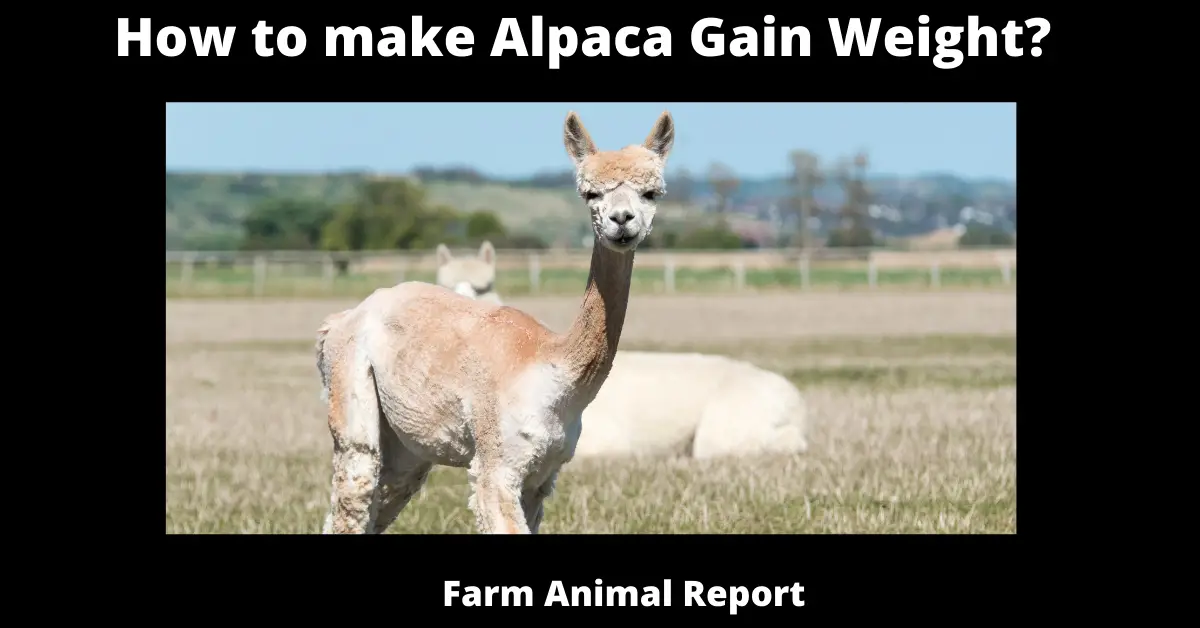As a General Rule provides a healthy diet of greens and hay, vitamins, and supplements.. Check for the obvious problems 1) Parasite Load 2) intestinal bloat 3) Mouth and teeth problems 4) Not being kept from hay from other animals. 5) Inherited Abnormalities 6) Environmental Problems. 7) Clean and fresh water source. When compared to forage, you can fatten up Alpacas by feeding them a more concentrated (energy-rich) diet. To help your body, take additional supplements and a vitamin-mineral blend. For rapid digestion, you can also use stomach powder.
How to make Alpaca Gain Weight?
How to make Alpaca gain weight. The best technique to assist a thin alpaca gain weight is to supplement their diet with a source that has at least 14 percent protein.
- On a diet of leafy greens and grass hay, some alpacas can maintain a healthy weight. So give them what they desire in order for them to gain weight. On the same food, older alpacas and females with crias are more likely to become skinny. It’s crucial to put some weight on skinny alpacas when there’s no grass and winter is approaching.
- Alpacas adore Lucerne and hay, often known as chaff. It’s relatively easy to come by and costs between $8 and $15 per small bale, though quality varies. Stockfeed retailers also sell lucerne chaff, which costs roughly $22 for a 25-kilo bag.
- Another alternative is to use oat hay. Alpacas readily accept oat hay, but they rapidly grow tired of it. Oat chaff can also be purchased for roughly $22 per 25-kilo bag at any respectable stock feed store.
- Clover hay is hard to come by, but alpacas adore it. It can be pretty costly to purchase, but it is definitely worth the extra expense. The level of quality varies. Small bales might cost anything from $10 to $25.
- TSF Easy Feed 12 is a feed pellet for cows, sheep, and alpacas. For cost-effectiveness, buy it in 1-tonne bulk sacks, although stock feed companies sell it in smaller 20-35kg bags. A scoop of TSF is combined with a half-and-half mixture of Lucerne and oat chaff.
- Some stock feed stores can make custom chaff blends with any chaff or grain blend. We have a specific combination put up for the alpacas, and they adore it. A 30kg bag should cost between $15 and $30.
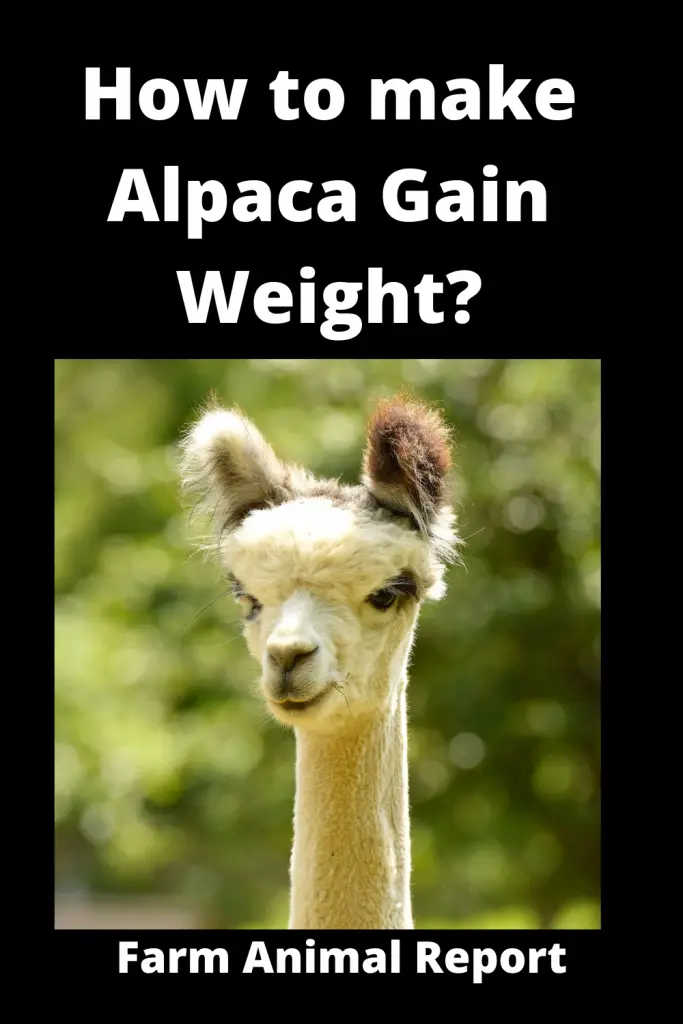
How do you Fatten up an Alpaca?
Help Alpaca Gain Weight – When compared to forage, you can fatten up Alpacas by feeding them a more concentrated (energy-rich) diet. To help your body, take additional supplements and a vitamin-mineral blend. For rapid digestion, you can also use stomach powder.
18 ways Alpaca Farmers make Money
What Health Problems Cause an Alpaca to be Skinny?
Competition
Because of the food fight, some weak Alpacas may stay underweight (because they take low feed intake). Underweight alpacas may be missing out on food from competing alpacas, necessitating the use of a separate food source to be healthy.
Medical problems
Weight loss/skinny Alpacas can be caused by various medical issues, including extended diarrhea or deadly diseases like paratuberculosis.
Malnutrition
Alpacas that are malnourished may become scrawny and feeble.
Alpacas are Skinny due to Dental Problems
Slimming down/skinny Alpacas can also result from dental problems; throughout their long lives, aged alpacas might lose, break, or wear down some or all of their permanent teeth. Some of their teeth are also prone to sharpening with time. As a result, individuals may find it more difficult to chew correctly and obtain the necessary nutritional mix from conventional meals.
Tall or thick pasture grass and hay may be challenging to eat for an older alpaca with dental issues. If you witness someone dropping wads of cud, it’s a clue that they have dental problems. They try their hardest to chew the grass or hay, but their dental issues prevent them from breaking it down enough to digest it. It’s also crucial to keep an eye on the weight of an older alpaca as they become older to make sure they’re receiving enough to eat (and can eat the food available to them).
You can manufacture your own unique food if necessary by feeding soaked hay pellets or chopped hay to help their teeth. You can guarantee that residents with dental concerns get all of the nutrients they need by offering them foods that don’t require as much chewing as hay and grass. You can also have any teeth that have become uncomfortably sharp or uncomfortable evaluated and filed or removed by a veterinarian.
If your elder alpacas don’t seem to be thriving, it could be due to a vitamin or mineral deficiency caused by poor chewing and digestion. Given where they graze and spend time indoors, make sure they continue to have easy access to minerals! If necessary, an alpaca-safe vitamin booster can be given to deal with any lingering deficits. Before making significant changes to any resident’s nutrition, always consult with your veterinarian.
What Nutritional Deficiencies cause an Alpaca to be Skinny?
Alpacas are slim due to a lack of vitamins, minerals, and other supplements. The normal range and importance of several vital vitamins, minerals, and supplements in the health of alpacas are listed below:
· Vitamins
Because the bacteria that live in the fore-stomachs provide many water-soluble vitamins (vitamins B, C), healthy alpacas do not require supplementation. Vitamins A and E are fat-soluble vitamins found in green grass (and even green weeds that grow after a brief summer rain), and they only need to be supplemented if the pasture is completely dry for more than 9-10 weeks. Vitamin D supplementation is required for alpacas.
All alpacas under the age of 3.5 years and all females (who give birth in the winter/early spring) should receive 2000 IU vitamin D/kg body weight under the skin or into the muscle (to fortify colostrum). The optimal time to use it is from late autumn to mid-winter (and early spring in higher latitudes like Europe, New Zealand, Tasmania, Canada). To determine the vitamin D content and how much to take, read the label on the bottle.
A 20-kilogram fetus, for example, requires 40,000 IU of vitamin D. If the vitamin D source you choose has 75,000 IU per mL, the cria will require about 0.5 mL of the solution to be injected. Overdosing on vitamin D can be harmful.
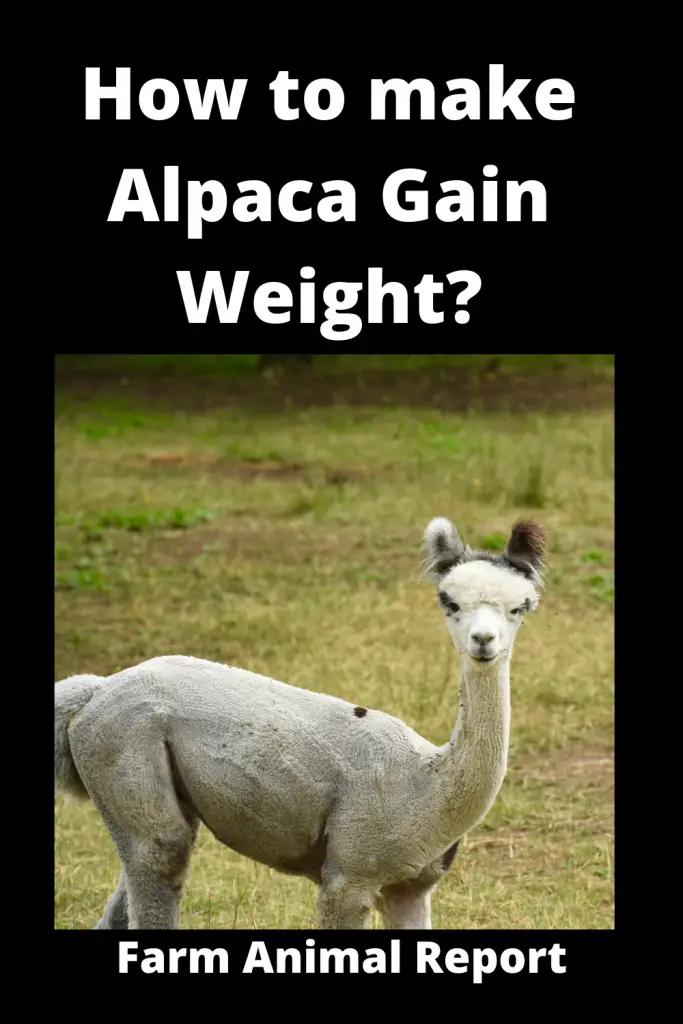
· Minerals
Is there a mineral deficiency in the area for sheep and cattle? For more information, contact the local Department of Agriculture, the district veterinarian, and nearby farms. Before supplementing, sample soils, pastures, and alpacas to check if mineral levels are appropriate.
Selenium deficiency is exacerbated by acidic, waterlogged soils (annual rainfall > 500 mm). An annual depot injection of barium selenate beneath the skin can be used to address selenium insufficiency. Alpacas can also be supplemented with short-acting oral formulations every 4-6 weeks at a 0.1 mg/kg BW rate. Sodium selenite or sodium selenite injections should not be given to alpacas since they can cause peracute liver failure and death.
· Supplementing the Diet
Excessive supplementation can be costly, time-consuming, and harmful to camelids. Do not feed supplements developed for horses and pigs. “The most poisonous plant for alpacas is the food-processing plant,” according to the late Dr. Murray Fowler of the University of California (Davis). Avoid feeding pellets unless used only to administer a specific supplement (e.g., zinc to help prevent facial dermatitis).
What Parasites can cause an Alpaca to be Skinny?
There are numerous endo and ectoparasites which cause an alpaca to be skinny. Endoparasites include worms (flukes, roundworms, and flatworms), coccidian, and protozoa. In contrast, Ectoparasites have fleas, ticks, and mange. All these play a role in losing Alpaca’s weight.
What can Inherited Diseases cause an Alpaca to be Thin?
Alpacas are Genetically Skinny due to the following Inherited Abnormalities:
- The most common congenital abnormality is choanal atresia, which is caused by the failure of the inner nares (choanae) to open during embryologic development. It might be unilateral or bilateral, with total or partial obstruction possible. As a result, the neonate’s predominant clinical presentation is a varying degree of respiratory distress. During nursing, crias frequently gasp as milk is inhaled, indicating pain. Surgical repair is not suggested since the Alpaca would not be able to gain weight and would perish.
- A wry face is defined by a lateral displacement of the maxilla ranging from 5° to >60°. A relative deviation in the mandible may or may not exist. When occlusion of the nares and absence of apposition of the incisors and dental pad is severe, the cria must usually be euthanized. There appears to be a considerable link between this abnormality and choanal atresia, as they occur together on occasion. If his ailment isn’t treated, he’ll end up with skinny alpacas.
- Juvenile cataracts, clogged nasolacrimal ducts, and a link between blue eyes and deafness in some white animal lineages are all included in ocular and ear problems. In Alpacas, short (“gopher”) and fused (tip or base) ears are heritable deformities, with the latter appearing to be a dominant trait.
- Syndactyly and polydactyly are two musculoskeletal abnormalities that have been identified. Arthrogryposis, twisted talus, angular limb abnormalities of the front limbs, and tendon laxity have all been observed. All of these illnesses reduce feed intake, resulting in feeble alpacas.
- Atresia ani, atresia coli, umbilical hernias, and various tail abnormalities, including a prominent lateral deviation of the tail at the base, have also been reported to reduce weight in llamas and alpacas.
- Alpacas have a substantially higher rate of urogenital abnormalities than other species. Uterus unicornis, hypoplastic ovaries, twin cervices, vaginal or uterine segmental aplasia, and clitoral enlargement in females are signs of intersex disorders. Unilateral kidney absence occurs on occasion, usually in conjunction with choanal atresia. It has also been observed that the kidneys are absent. Hypospadias, retained balls, testicular hypoplasia, persistent frenulum, ectopic balls, and corkscrew male organ, are all congenital disorders in boys.
What can Adolescent Problems cause an Alpaca to be Skinny?
Excessive competition for a mating partner or dominance in the same flock might lead to underweight alpacas (which did not get enough food and supplements).
Active breeding is also energetic. Alpacas also lack fat due to over breeding, resulting in underweight alpacas if sufficient nutrition is not provided.
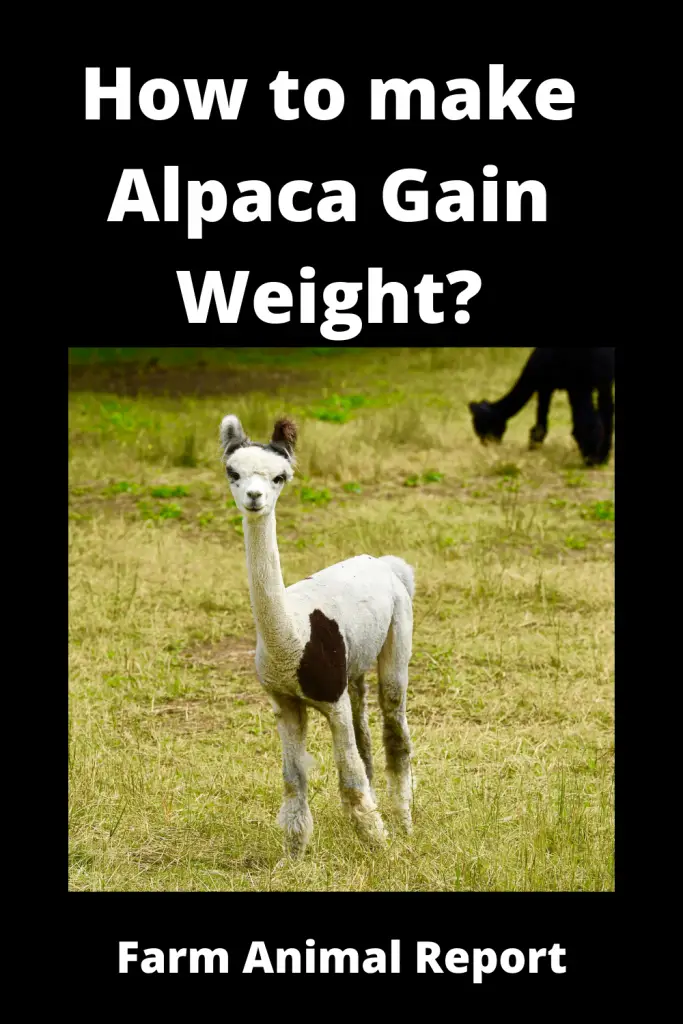
What Environmental and Pasture Problems cause an Alpaca to be Skinny?
The Alpacas will get the majority of their nutrients from pasture and water. Alpacas get underweight if their pasture or water intake is decreased.
Water, energy, protein, and fiber are the four primary components that alpacas need in their meals. Ensure that you have access to clean, fresh water at all times. 30-80 mL/kg body weight per day (3-8 percent BW/day) is the daily water requirement. A 70-kilogram alpaca, on the other hand, consumes 2.1-5.6 liters of water each day. While grazing green pasture (20 percent DM), the amount of water consumed is lower than when grazing hay (90 percent DM). In hot temperatures and when breastfeeding, alpacas will drink more water.
Water troughs must be checked daily and cleaned once a week. The pasture will meet the majority of your calorie, protein, and fiber requirements. It’s important to remember that pasture intake is determined by the quality of the feed, not the amount. The proportion of each is determined by the maturity of the plant (Figure 2). It also meets the majority of vitamin and mineral requirements. Protein percent + energy percent (sugars and fats) + fiber (cell walls) percent + minerals percent = total ration (100%) It’s important to remember that as the amount of one nutrient in a ration rises, the number of other nutrients must fall.
Greener pastures have more protein; thus, as the pasture matures, the protein content drops. The crude protein amount in the feed necessary for maintenance is 8-10%. Growth (12-14 percent CP), pregnancy (12 percent CP), and nursing all necessitate higher doses (13-15 percent CP).
Feed Long-Stemmed Roughage
To maintain their fore-stomachs running normally, alpacas require pleasant, digestible, long-stemmed roughage (leafy, green pasture, hay, and silage longer than 4 cm in length). A diet consisting of very short (or non-existent) pasture, chaff, grain/pellets, or very rich spring pasture is insufficient to maintain the stomach healthy.
If pasture fiber is low, provide ad-lib, long-stemmed, pleasant, digestible pasture/hay at all times. Manually evaluating the breaking strength of plant matter can provide a general indication of plant fiber content in the pasture — more mature plants have more fiber (thicker cell walls, more lignin) and are more difficult to break, making them less appealing and digestible. The quality of the feed, not the amount, determines how much is consumed.
Feeding Plan to Fatten up a Skinny Alpaca
You may assist a thin alpaca gain weight by supplementing their diet with a source that contains at least 14 percent protein.
The thin Alpaca must be fed a 1.5 percent maintenance diet. Feed them digestible roughage to meet maintenance requirements, including leafy, green pasture, hay, and silage.
Example:
In the case of 70 kg alpaca, use this formula to fatten up: 70 kg x 1.5 % body weight = 1.05 kg dry matter (DM), i.e., all water eliminated from the diet
5.3 kg lush pasture/day = 1.1 kg DM × 100/20 (grass with 20 percent DM content) 1.2 kg pasture hay/day = 1.1 kg DM x 100/90 (hay with 90 percent DM content).
Those Alpacas that are in the growth stage or in late pregnancy will consume dry matter in the range of 2-2.5 percent of their body weight. To achieve maintenance requirements, provide palatable, digestible roughage (lush green pasture, hay, silage). Then, as needed, add energy/protein (high-quality lucerne hay/oats/lupins/peas, for example).
Access for all
Animals should always access long-stemmed fiber (try laying a large round bale of pasture/oaten hay in the paddock during drought conditions). If supplemental feeding of concentrates (such as grain or pellets) is necessary, ensure that all animals have access to the feed simultaneously.
The feed can be dumped directly on the ground; however, feeding in long troughs can reduce waste (e.g., guttering, old conveyor belting laid out on the ground, shade cloth attached to the fence). Introduce fresh feeds throughout a 10- to 14-day period to allow for adaptability. Once accustomed to the news feed, giving twice as much every other day will save time and money while also providing nutrients to shy feeders. The dominant animals will consume the supplements first and then walk away when they are full, allowing the shy feeders to enjoy them later in the day/overnight.
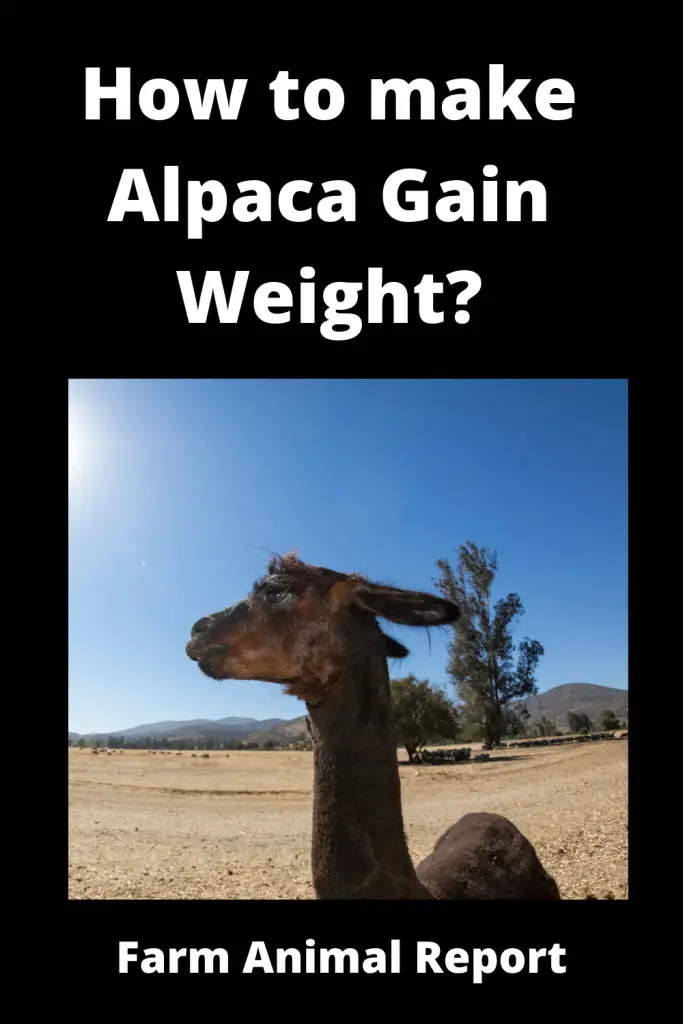
Are there Miniature Alpacas?
Yes, little alpacas exist. They arose as a result of a mutation in the regular gene pool. Miniature alpacas range in weight from 100 to 150 pounds. An Alpaca must be no more than 34 inches tall at the front withers (shoulder height) at the age of three to be considered tiny. It’s roughly three-quarters the size of a typical llama but slightly larger than a regular alpaca.
Symptoms of Thin Alpacas
Some of the symptoms of thin Alpacas are:
- Weakness
- Lethargy
- Diarrhea (optional)
- Dental issues
- Shrunk body
- Very little/no body fat
- The rib cage is fully shown
Can Alpacas get Fat? Or what can Cause an Alpaca to be too Fat?
Alpacas become obese for several reasons, including:
- Genetic disorders
- Mismanagement
- Slow metabolism
- Aggressive eating/alpha status
Most of these issues can be resolute by changing the feed or reorganizing the herd. Alpaca farmers have been debating for years about which parts of the diet make alpacas obese. A kilogram of Brome hay contains 2.20 Kcals of digestible energy (DE). A similar amount of grain has a DE of 3.30 kcal. Although maize feeding is also a contentious topic, the value is the same regardless of which grain is considered.
Grains are a concentrated source of energy in general. Pasture and hay contain either a lot of water or a lot of fibrous material. To receive the same amount of calories as a pound of maize, an alpaca would have to eat far more of either. Hay and pasture, on the other hand, take longer to ferment and release energy. This maintains better appetite control than the supplement’s fast surge.
Corn is a safe feed item for alpacas; the only risk is that too much corn will cause them to gain weight. This grain has been linked to ulcers in the past. Stress is the most common cause of ulcers. They can also be caused by too much corn being fed at once or if the maize is ground too finely. Grains, in general, are readily fermented, releasing a burst of volatile fatty acids in the process (VFA). The liver converts these acids into energy.
Obesity can be caused by consuming too much of anything. The important thing is to begin by lowering or eliminating supplements. If supplement decrease isn’t working, hay or pasture might be used instead. Minerals should be freely available. To reduce stress, a progressive reduction in supplements and hay or pasture is recommended. In addition to food adjustments, some ambitious owners have incorporated daily exercise to promote weight loss.
To avoid unfavorable birth and lactation outcomes, change is required. Although supplement removal may appear cruel, keep in mind that these animals evolved in a challenging environment. They can survive only on forages if necessary. A healthy and productive alpaca is in good condition.
Obesity can be avoided by dividing animals into groups based on their maturity and reproduction stages. Because maidens are still growing during their first pregnancy, they have a higher requirement for all nutrients. Similarly, due to weight loss during nursing, female alpacas in their teens may be skinny.
Obesity is more prevalent among middle-aged women. Group them and feed them according to their health and pregnancy stage. During the first few months after birth, it is difficult for a woman to gain weight. It is at this time when milk production reaches its pinnacle. Due to fetal hypertrophy, energy demands are very substantial throughout late pregnancy. These two stages necessitate a larger energy intake; the animal must be fed at all other times to maintain its condition.
Health Problems of Fat Alpacas
- The most common problem of fat Alpacas is that they cannot run fast, i.e., low stamina
- Obese females have more reproductive issues as compared to underweight females.
- More fat/cholesterol leads to cardiovascular issues by blocking the arteries.
- Chances of hepatic (liver) and kidney failure are more.
Final Thoughts
Alpacas are popular as pets, pack animals, and even substantial commercial herds for cria and fiber production on small farms. Alpacas are known for their gentle demeanor and padded feet, which cause minor damage to the pasture.
Alpacas were originally from the Andes and were popular among the Incas, who used their fiber to make a textile that was only worn by the nobles. Alpaca fiber is highly commended for its softness and quality, and it is regarded as second only to silk in terms of softness and quality. The popularity of alpaca fiber (wool) has grown in recent years. Though most production occurs in South America, alpaca fiber production is gaining appeal in the United Kingdom and the United States.


